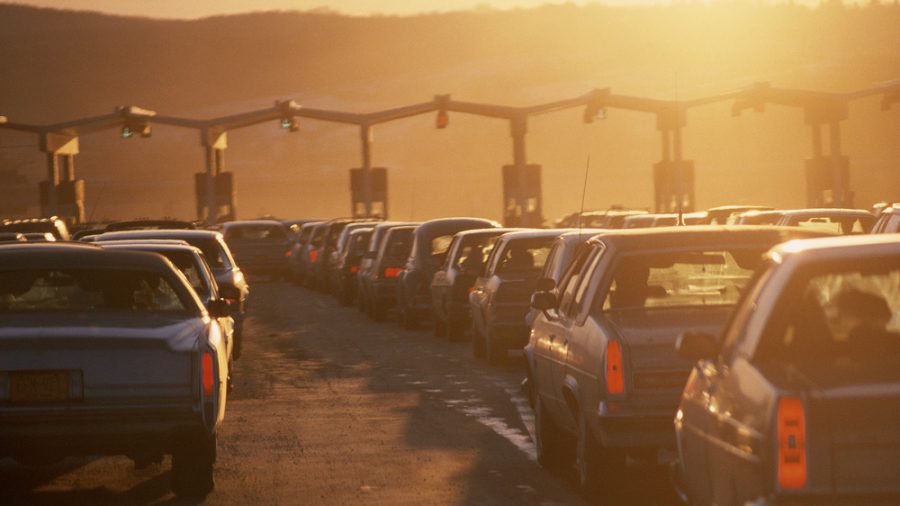London was first to impose a congestion tax to enter the city. Now the NSW government is discussing ideas for a congestion tax in Sydney. It’s also considering road user charges based on how far you travel. If a congestion tax is coming, driving to work could get more expensive.
Sydney depends on cars
Sydney is certainly a car-dependent city. Some two thirds of commuters drive to work and only 22% climb on a bus, train or ferry.
The pandemic has influenced the choices people make. Even though lockdowns have ended, usage of public transport to the CBD is still 17% less than before the pandemic. For many other reasons, such as ridesharing and online shopping, traffic congestion continues to worsen.
There’s no doubt Sydney’s traffic would travel more smoothly with fewer cars. Grattan Institute says a congestion tax could take at least 3,000 cars off the roads during morning and afternoon peaks. Traffic would flow better, up to 1% faster at peak hour. (The first stage of the F6 extension has seen speed increases of only 0.3%.)
A trial reported in The Conversation found a mere 5% reduction in traffic boosts traffic speed by 50%. What is a congestion tax and how would it work?
What is a congestion tax?
A congestion tax is an amount motorists pay to enter the CBD of a city. Motorists can use an electronic tag, as they do for toll roads, each time they enter the congestion zone.
The tax acts as a disincentive for people to enter the CBD unless they really need to. For example, they might take public transport instead or arrange their meetings online. They could also reschedule their trips by travelling earlier or later when the tax does not apply.
London adopted a congestion tax in 2003. Drivers there currently pay $25 a day to enter a 20 sq km area of the city.
The congestion tax is not a cure-all. London is still highly congested and, according to INRIX, drivers lost 148 hours in 2021 to congestion. It also noted the logjam outside the congestion zone, created when motorists try to avoid it. New York City is planning to introduce a congestion tax in 2023.
If the congestion tax were introduced in Sydney, it would push up the cost of deliveries. It could also unfairly hurt commuters on lower incomes who live further away and have less access to public transport. But it could also free up the roads for the people who need to drive into the CBD.
Road user charges for everyone
Another broader way to deal with congestion is to charge motorists according to how far they travel, especially at peak hours.
A recent secret NSW government paper claims road users “don’t pay the true costs” of driving. (It’s debatable whether we do know the true costs of driving. We still don’t pay the proper price for parking, roads maintenance or the effect of congestion on health, productivity, or the environment.)
However, road user charges make sense only if there’s a viable alternative to driving. For example, public transport needs to be an attractive, efficient and convenient option. The discussion paper talks about changing public transport fares to “reflect the true cost of trips”. If bus and train fares were increased, it could be counterproductive and push people back into their cars again.
Of course, Sydney’s toll roads are already one version of road user charging.
Do toll roads reduce congestion?
Did you know road user charging is usually more effective in reducing traffic congestion than building roads? In fact, building roads increases congestion because of induced demand.
A US study found vehicle-kilometres travelled increased in proportion to the number of highway lane kilometres and slightly less rapidly for other types of roads. Many users, whether current residents or commercial traffic, simply drove more. Even increasing lane kilometres for one type of road doesn’t take traffic off other types of road.
The researchers also found no evidence providing public transport affected vehicle-kilometres driven.
greenslips.com.au will be interested to see the results of the new NSW government review of toll roads. The review wants to analyse how the increase in toll roads has shaped Sydney and any influence on traffic congestion. Its aim is to achieve consistency and equity in toll pricing, reduce emissions and – yes – improve traffic congestion.
It seems traffic congestion continues to be a thorny and unsolvable problem.


your opinion matters: